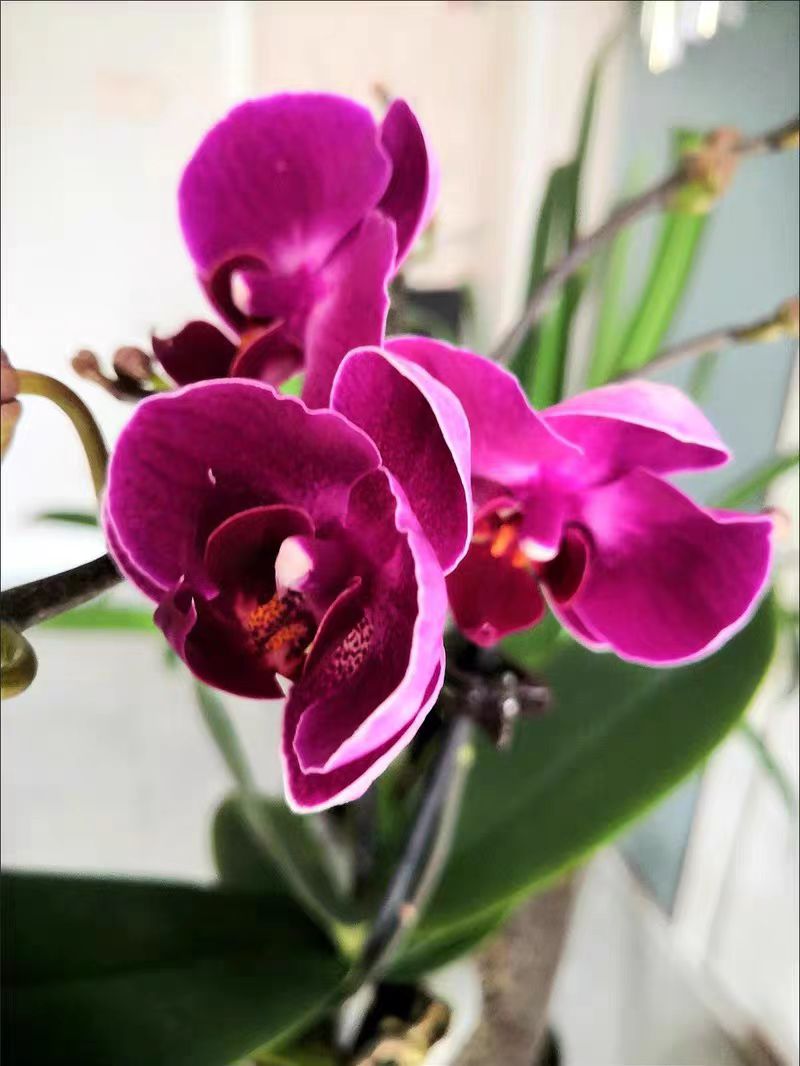As a tropical epiphytic orchid, Phalaenopsis is extremely sensitive to its growing environment, and temperature is a key factor affecting its growth and development. When the temperature is too high, Phalaenopsis not only has difficulty blooming beautifully but also faces a series of growth crises.
Phalaenopsis is native to tropical and subtropical rainforest areas. The suitable growth temperature is between 15℃ and 28℃, and the requirements for temperature during flower bud differentiation and development are even more stringent. When the ambient temperature remains above 30℃, the growth mechanism of Phalaenopsis will change significantly, thereby inhibiting flowering. From the perspective of plant physiology, high temperatures can disrupt the hormonal balance in Phalaenopsis. Flower bud differentiation requires specific hormonal levels. High temperatures cause the plant to synthesize excessive auxin, while the secretion of abscisic acid, a key hormone that inhibits flower bud differentiation, is inhibited. As a result, flower buds cannot differentiate normally. Even if flower buds have formed, they may abort, wither, and fall off due to high temperatures, and ultimately fail to bloom.
At the same time, high temperatures also disrupt the balance between photosynthesis and respiration in Phalaenopsis. In a high - temperature environment, the stomata of Phalaenopsis will partially close to reduce water loss. This significantly reduces the absorption of carbon dioxide, weakens the intensity of photosynthesis, and the plant cannot accumulate enough organic matter to provide energy for flowering. On the contrary, respiration is enhanced by high temperatures, consuming the already insufficient nutrient reserves, resulting in stunted growth and development of the plant, and making it even more difficult to meet the energy and nutrient requirements for flowering.
The harm caused by high temperatures to Phalaenopsis is far more than just inhibiting flowering. Excessively high temperatures will accelerate the evaporation of water in the plant. The root system of Phalaenopsis has limited water absorption capacity. In a high - temperature environment, the water loss rate of the plant far exceeds the absorption rate, which can easily lead to water loss, curling, and yellowing of the leaves. In severe cases, the entire plant may die of dehydration. In addition, the high - temperature environment will reduce the immunity of Phalaenopsis, making it more vulnerable to pests and diseases. The high - temperature and high - humidity environment is a hotbed for the growth of fungi, bacteria, and pests. Diseases such as anthracnose and soft rot, as well as pests such as spider mites and aphids, will take advantage of the weakness to further damage the health of the plant, affecting its normal growth and survival.
To enable Phalaenopsis to grow healthily and bloom on schedule, it is necessary to pay attention to temperature control during the maintenance process. In summer, when the temperature is high, Phalaenopsis can be moved to a cool and ventilated place indoors, or air - conditioners, fans, and other equipment can be used to adjust the ambient temperature. At the same time, the air humidity can be increased by spraying water on the ground around the plant and using a humidifier to create a relatively suitable micro - environment for Phalaenopsis. In addition, reasonable watering and fertilization to enhance the resistance of the plant are also helpful for Phalaenopsis to maintain a good growth state in the high - temperature season.
Phalaenopsis has very strict requirements on temperature. Excessively high temperatures will not only inhibit its flowering but also pose a serious threat to the overall health of the plant. Only by deeply understanding the growth habits of Phalaenopsis and scientifically managing the temperature can this "Queen of Orchids" bloom heartily in a suitable environment.
Will high temperatures inhibit the flowering of Phalaenopsis?

Share with
Tagged in :




Leave a Reply